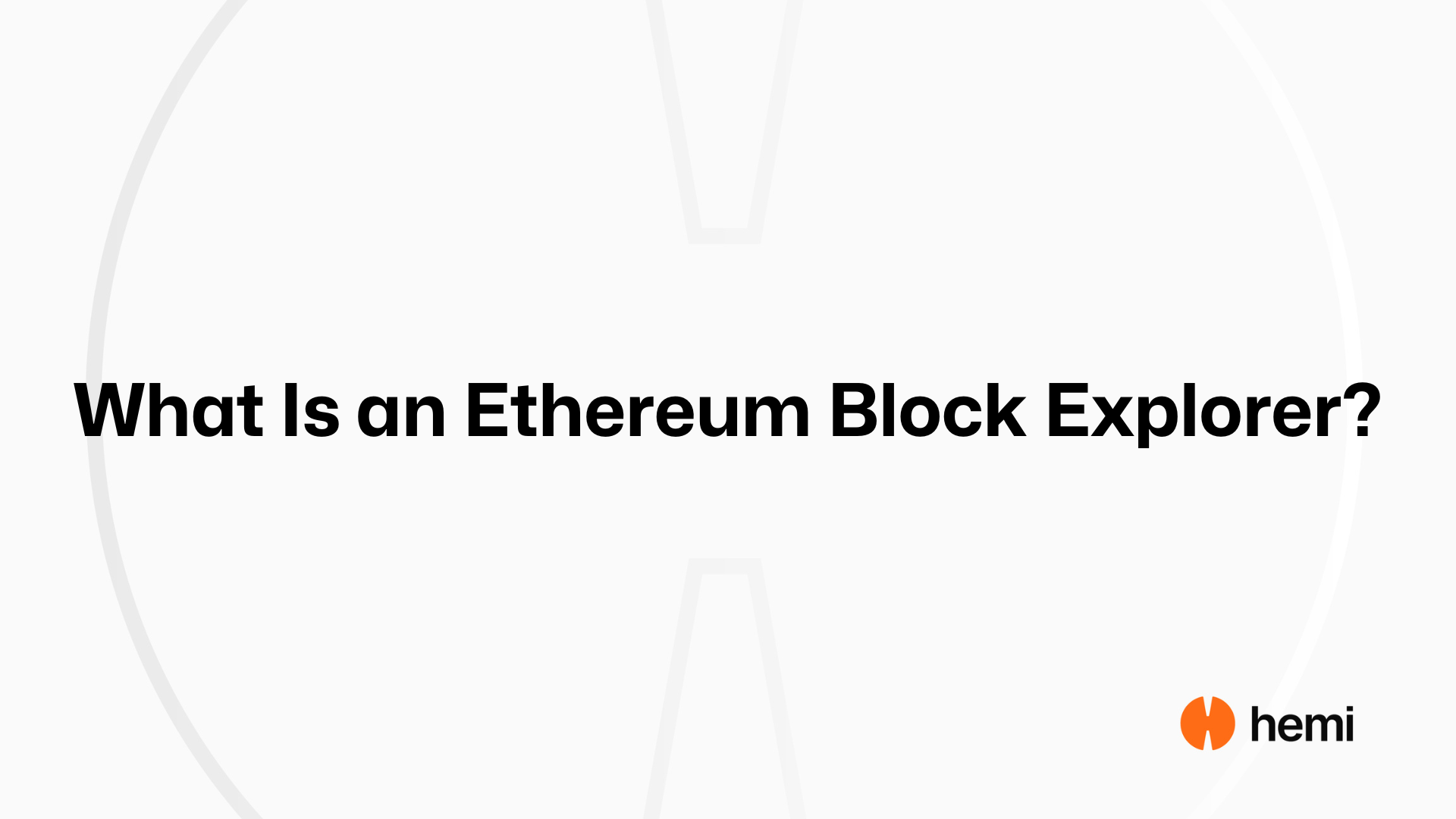- Bitcoin
- Ethereum
- Hemi
- Learn Center
- May 3, 2025
What Is an Ethereum Block Explorer?
This tool lets users view and understand the Ethereum blockchain.

An Ethereum block explorer is a search engine for the Ethereum blockchain. It lets users look up, verify, and track activity like wallet balances, transaction history, contract deployments, and block confirmations—all in real time.
Block explorers are essential tools for interacting with any blockchain network, but especially Ethereum, where much of the network’s activity goes beyond basic transfers. With smart contracts, NFTs, DeFi, and more, explorers give visibility into what’s actually happening under the hood.
What Can You See With a Block Explorer?
At the core, a block explorer shows you the transactions and blocks on the Ethereum network. But there’s much more behind the scenes.
Search bar: The starting point for most users. You can enter a wallet address, transaction ID (TXID), block number, token contract, or ENS name to pull up data.
Wallet address pages: These show the full transaction history of an address—what it sent, received, interacted with, and how much gas it paid. You’ll also see the current wallet balance, both in ETH and in any tokens held.
Transaction details: Every Ethereum transaction has a TXID and includes metadata like timestamp, transaction fees, status, gas used, value sent, and the addresses involved.
Block details: Each block transaction bundle includes the list of transactions it confirmed, miner info, block reward, size, and time of creation. You can also track the hash rate and how fast blocks are being added to the chain.
Smart contract data: For deployed contracts, explorers often provide read/write interfaces. You can inspect the contract code, call functions, or monitor on-chain activity.
Why Use a Block Explorer?
For most users, an Ethereum block explorer helps answer simple but crucial questions:
- Did my transaction go through?
- How much ETH is in that wallet?
- What’s the status of my contract interaction?
- What’s the current transaction volume on the network?
- Is this token contract legitimate?
Explorers are also critical for developers, validators, DeFi users, and anyone who needs to confirm transaction statuses without relying on third parties.
Examples of Ethereum Block Explorers
The most widely used explorer is Etherscan, but others include Blockscout, EthVM, and Web3-focused dashboards like DeBank or Zerion. Many L2 networks also run their own versions of block explorers.
As Ethereum continues to evolve—especially with L2s like Hemi bridging Bitcoin and Ethereum ecosystems—explorers will play a growing role in helping users verify cross-chain activity and ensure that data remains transparent, accessible, and on-chain.